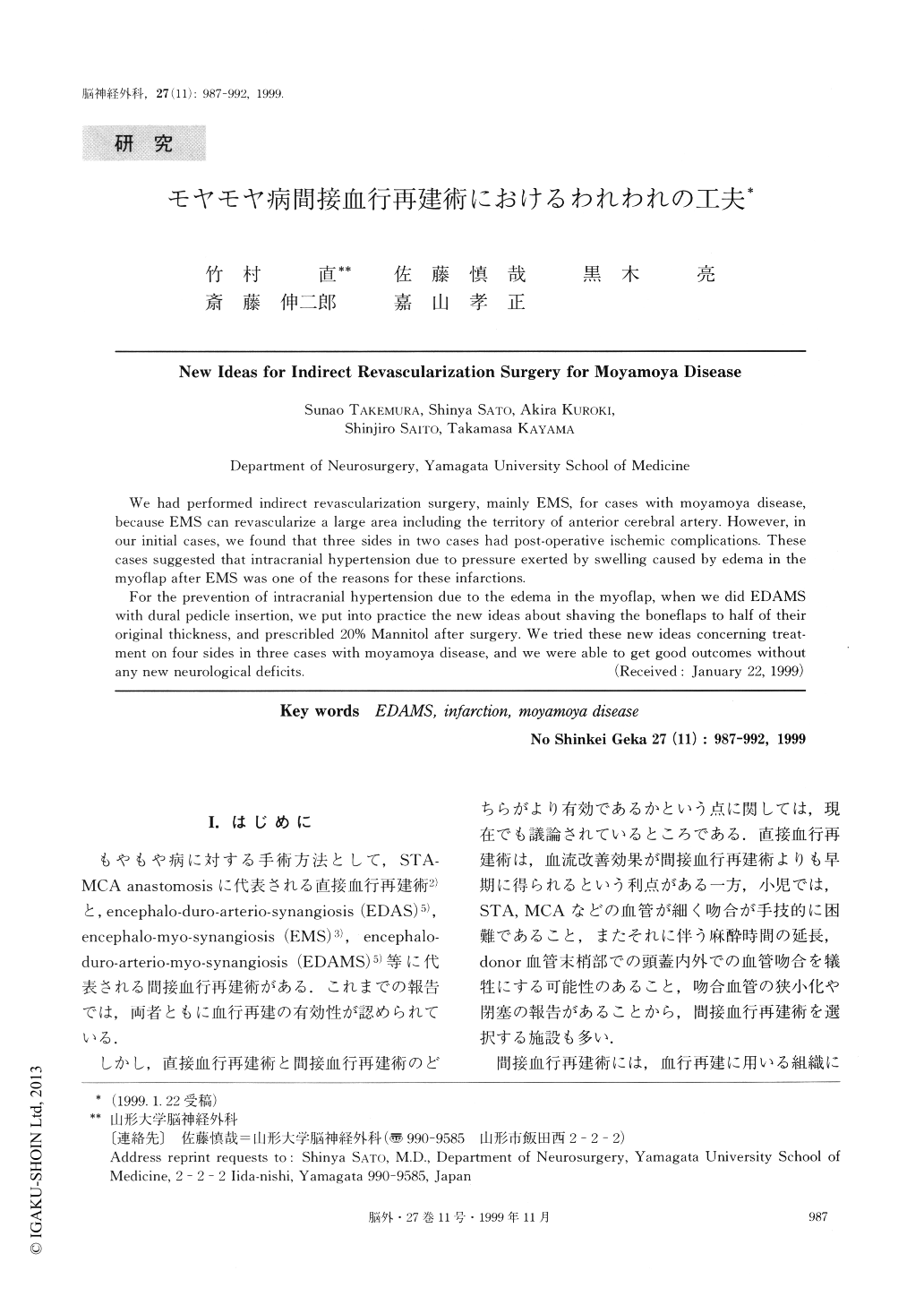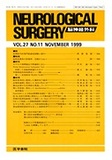Japanese
English
- 有料閲覧
- Abstract 文献概要
- 1ページ目 Look Inside
I.はじめに
もやもや病に対する手術方法として,STA-MCA anastomosisに代表される直接血行再建術2)と,encephalo-duro-arterio-synangiosis(EDAS)5),encephalo-myo-synangiosls(EMS)3),encephalo-duro-arterio-myo-synangiosis(EDAMS)5)等に代表される間接血行再建術がある.これまでの報告では,両者ともに血行再建の有効性が認められている.
しかし,直接血行再建術と間接血行再建術のどちらがより有効であるかという点に関しては,現在でも議論されているところである.直接血行再建術は,血流改善効果が間接血行再建術よりも早期に得られるという利点がある一方,小児では,STA,MCAなどの血管が細く吻合が手技的に困難であること,またそれに伴う麻酔時間の延長,donor血管末梢部での頭蓋内外での血管吻合を犠牲にする可能性のあること,吻合血管の狭小化や閉塞の報告があることから,間接血行再建術を選択する施設も多い.
We had performed indirect revascularization surgery, mainly EMS, for cases with moyamoya disease,because EMS can revascularize a large area including the territory of anterior cerebral artery. However, inour initial cases, we found that three sides in two cases had post-operative ischemic complications. Thesecases suggested that intracranial hypertension due to pressure exerted by swelling caused by edema in themyoflap after EMS was one of the reasons for these infarctions.
For the prevention of intracranial hypertension due to the edema in the myoflap, when we did EDAMS with dural pedicle insertion, we put into practice the new ideas about shaving the boneflaps to half of theiroriginal thickness, and prescribled 200/s Mannitol after surgery, We tried these new ideas concerning treat-ment on four sides in three cases with moyamoya disease, and we were able to get good outcomes withoutany new neurological deficits.

Copyright © 1999, Igaku-Shoin Ltd. All rights reserved.


